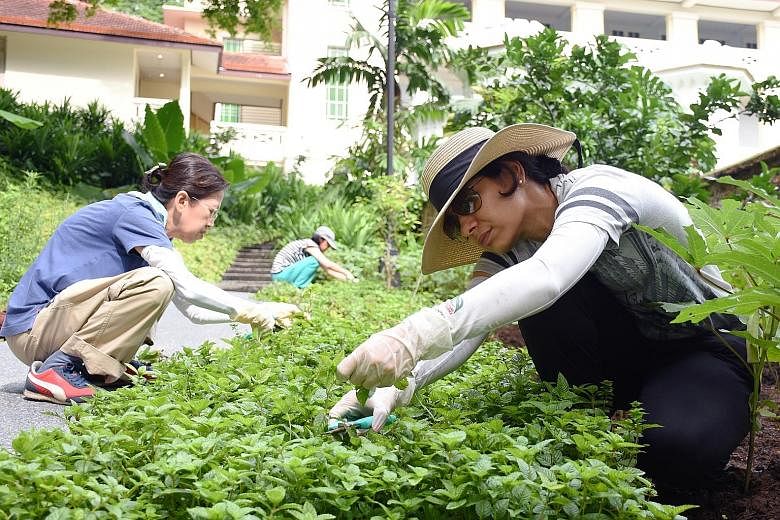At Fort Canning Park's Spice Garden, not only can you enjoy the sweet scent of lemongrass and the distinct aroma of pandan, you can take some home as well.
But only on Friday mornings.
The public can pick up vegetables and herbs which have been harvested by volunteers between 9am and 11am at a corner set up by the National Parks Board (NParks).
The NParks initiative started in March with hopes that, through sharing, it will be able to educate more people about the different plants in the park and their attributes, including medicinal properties.
"Hopefully, this will also instil in visitors greater love for the park and nature as a whole," said Ms Kalthom Latiff, the arts and heritage parks director at NParks, who is leading the initiative.
Spice Garden was chosen because the plants that grow there are more relatable to people as they are often used in cooking. She said the plants also have to be harvested regularly as some survive only between three and six months.
Located just next to the Registry of Marriages, Spice Garden is filled with herbs for laksa and curry, sweet potato, ladies' fingers and blue pea, just to name a few.
About two different plants are usually harvested each week.
About 10 volunteers were picking plants under the morning sun with NParks' permission when The Straits Times visited the garden last week.
Plucking fruit or plants on NParks' sites, like gardens and parks, is usually forbidden, and those who flout the law risk getting fined.
The visitors collected sweet potato leaves and the leaves of the Mesona procumbens plant - which is used to make the popular grass jelly dessert known to many as chinchow.
To make chinchow, the leaves of the Mesona procumbens plant is first blended with white sugar and water. The resulting solution is then sieved and allowed to cool before it sets into a jelly.
NParks left leaflets printed with a recipe to make chinchow at the harvest corner.
Housewife Wendy Leong, 50, who passed by the corner while on a walk with some friends, took some of the plants with plans to grow them outside her flat.
"These plants are not common so it is not easy to get cuttings... Hopefully they will survive and I can cook them in the future," she said.
Volunteers like Ms Alice Goh, 57, have been working in the garden for two years. They said they were happy that more people will now be able to enjoy the plants they have harvested.
In the past, volunteers took the plants and herbs home and the rest were turned into compost to fertilise the gardens in Fort Canning Park.
Volunteers and NParks officers have also used the items to make drinks and salads, which they share during the Friday sessions.
"It is very therapeutic, and you learn a lot about gardening and what the different plants can be used for," said Ms Goh, who works part-time at a social enterprise.

